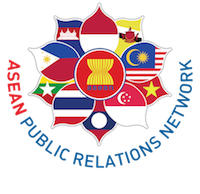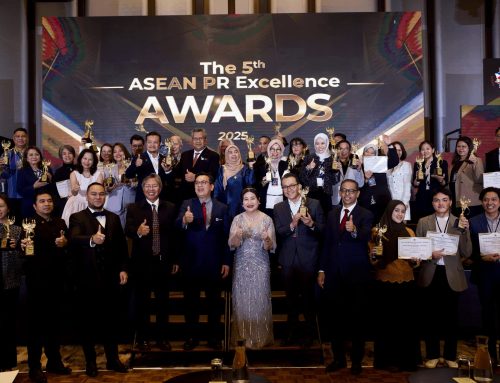ASEAN is currently becoming a new economic strength and competition. Ten ASEAN countries will be one of the new economic powers in the world with total income $ 2.323 T (position 5 in the World). Through the realization of the ASEAN Economic Community (AEC) by the end of December 2015, ASEAN will be market and production base, highly competitive area, proportional economic growth and a fully integrated region with the world’s economy.
Small Medium Enterprise (SME) are the backbone of the ASEAN economy. In 2013, the number of SME reached a total of 96% of all companies in the ASEAN. SME also contribute to employment up to 50-97% in each of ASEAN member country. SME commits to export activity around 19-31%, and approximately 30-60% of the GDP. Therefore, AEC provides an opportunity for SME to become a major player in the ASEAN market and allows to integrate within production network of regional and global market.
Strengthening SME is one of the important elements in the AEC Blueprint 2015, particularly related to the pillars of proportional economic development which highlight the commitment to reducing the development gap within the region. AEC Blueprint 2025 re-emphasize the role of SME as the backbone of the economy of ASEAN for preparing a variety of programs aimed at improving the competitiveness and resilience of SME to be able to benefit from ASEAN economic integration. This was confirmed at the 27th ASEAN Summit in Kuala Lumpur, where ASEAN adopted the Strategic Action Plan for SME Development (SAPSMED) 2016-2025 with a vision Globally Competitive and Innovative SME. Looking at the various challenges faced by SME in ASEAN, the ASEAN Economic Ministers in 2015 has adopted the ASEAN Strategic Action Plan for 2016-2025 SME Development (SMED SAP 2025). SAP SMED 2025 is targeted at: (1) increased productivity; (2) technology and innovation; (3) access to finance; (4) access to markets and internationalization; (5) policies and regulations; and (6) entrepreneurship and human resource capacity.
The presence of SAP SMED in 2025 was also a form of response to the completion of the various problems faced by SME in ASEAN. ASEAN Working Group in collaboration with the Economic Research Institute for ASEAN and East Asia (ERIA) and Organization for Economic Research Cooperation and Development (OECD) conduct research on the importance of SMEs in ASEAN, and resulted the eight dimensions measured policy. Eight SME policy dimensions include: First, the institutional framework; Second, access to support services; Third, start a business that is faster and cheaper and better regulation for SMEs; Fourth, access to finance. Fifth, technology and technology transfer; Sixth, international market expansion; Seventh, education and entrepreneurship training and Eight, the empowerment of SME policy.
Based on these results, Singapore is the highest Value of Small and Medium Enterprises Policy Index achiever in ASEAN with an index value of 5.4 and followed by Malaysia with an index value 4,7. This study shows that the development of various SME regulations are still need to be improved in other ASEAN member states in order to create high SME competitiveness within ASEAN region.
Another challenge is the lack of communication in promoting and exposing SME in ASEAN despite the SME product excellence and company profile, especially the ones that aim consumers both at home and abroad. Therefore, the question that needs to be answered is to what extent does the role of Public Relations in helping to improve the competitiveness of SME in ASEAN and Global?
Public Relations has a particularly important role in building awareness and educating the SME intended target market. Potential public relations strategies are:
1) Brand Storytelling in ASEAN
The target market of SME tend to be uninterested in the products of SME due to various factors such as lack of information about the product so that the audiences are unaware. The Brand Storytelling in ASEAN aims to highlight the uniqueness and superiority of the product through the stories that can inspire the audience so they can share a story about product. Media to be utilized by SME in ASEAN Brand Storytelling is Internet. Communicating via internet in various platforms, such as social media, website and email, is the right choice considering the target of SME market is in regional and global. The best promotion through Brand Storytelling in ASEAN submitted by the public have a strong impact to build product awareness. In addition, the use of communication via the Internet can overcome the constraints of distance or intensity of communication. Communication is very important in running a business because it will create a strong emotional bond with the target market.
2. ASEAN Direct Relations
ASEAN Direct Relations is a Public Relations strategy to communicate the SME products in ASEAN and global. ASEAN Direct Relations Direct use traditional way of Public Relations like media gathering and showcase to communicate the products of SME in order to get a good awareness. In addition to media gathering and showcase creating awareness are complemented by educating the target market so that they can comprehend the quality of SME products very well. Public Relations strategy is considered to be an appropriate step for SME because through media gathering, the SME will gain support from the media to communicate its products through mass media. Additionally, event can be done as a meeting point between producers and SME target market, as well as an opportunity to expand its network with investors. Nevertheless, the role of government to facilitate SME showcase in ASEAN and global products is also necessary.
By :Yuliana Riana P, MM – Head of Centre For ASEAN Public Relations Studies






